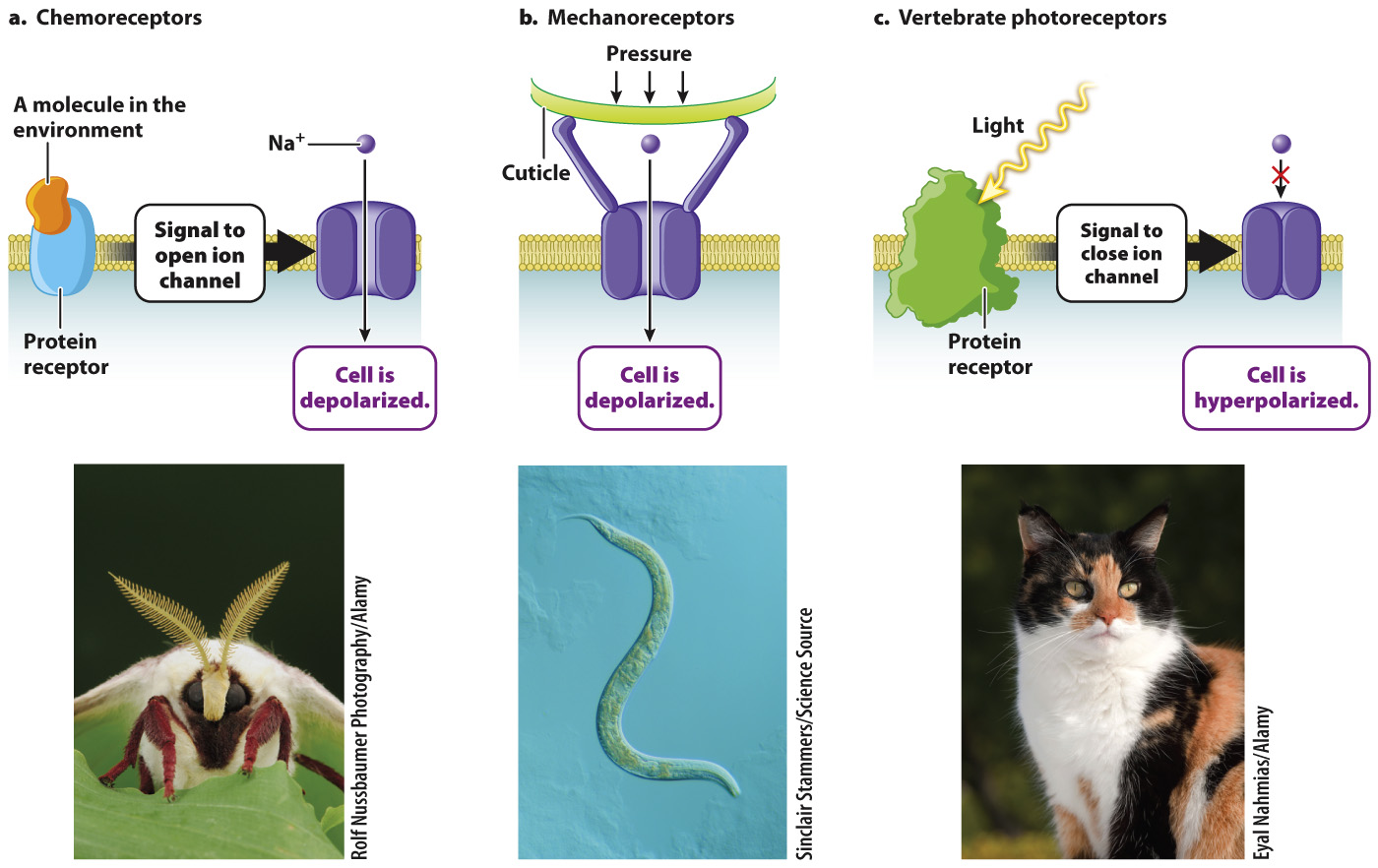Specialized sensory receptors detect diverse stimuli.
Animals have evolved a diverse array of sensory receptors that respond to different stimuli, among them touch, light, and the oscillations in air pressure we call sound waves. How is a physical phenomenon in the world outside an organism transformed into a nerve impulse? The initial transformation takes place inside the sensory receptor (Fig. 36.2). A physical or chemical stimulus is converted into a change in the sensory receptor’s membrane potential. Recall from Chapter 35 that a cell’s membrane potential is the electrical charge difference between the inside and the outside of the cell membrane, and that a depolarization in membrane potential is the first step in firing an action potential. Sensory receptors either fire action potentials themselves or synapse with neurons that fire action potentials, which are then transmitted to the central nervous system.

In many cases, the sound wave, touch, or other stimulus causes ion channels in the cell’s plasma membrane to open. The influx of ions changes the membrane potential by altering the distribution of charged ions on either side of the membrane. Let’s look at examples of how three different types of stimuli from the environment—